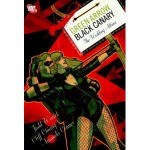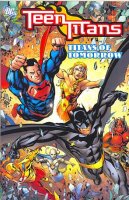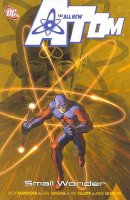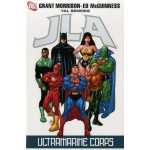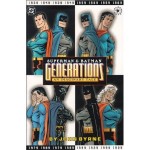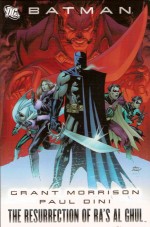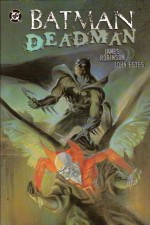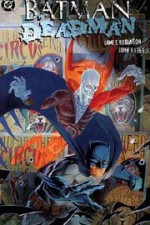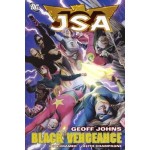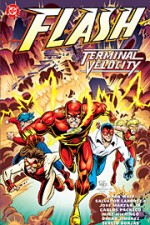
By Mark Waid, Mike Wieringo & various (DC Comics)
ISBN: 978-1-56389-249-3
When Barry Allen, the Silver Age Flash whose creation ushered in a new and seemingly unstoppable era of costumed crusaders, died during Crisis on Infinite Earths in 1985, he was succeeded by his sidekick Kid Flash. A young man who initially struggled to fill the boots of his predecessor, both in sheer physical capability and, more tellingly, in confidence, Wally West felt a fraud, but like a true hero he persevered and eventually overcame.
After years in the role, West had adapted and made a convincing argument for being an even greater hero as he triumphed over his mentor’s uncanny foes and a whole new Rogues’ Gallery of his own. In Terminal Velocity (reprinting issues #0 and #95-100 of the monthly Flash comicbook) scripter Mark Waid and an impressive band of illustrators went into creative overdrive following the company wide reboot and strategic reworking of the entire continuity dubbed Zero Hour.
The event was marked by an “issue zero†for every title then being published, wherein the new official origin for each character was established as well as setting up new storylines and it is with Wally West’s new beginning that this pulse-pounding superhero saga opens. ‘Flashing Back’ by Waid, Mike Wieringo & Jose Marzan Jr. found the Scarlet Speedster a helpless stream of Speed Force energy bouncing through his own history until he returned to his correct place in time, just in time for the six-part epic Terminal Velocity which began with ‘Mach One: The Dead Yet Live’ (pencilled by Salvador Larrocca).
There are many super-speedsters in the DCU and many of them congregate in the twinned metropolis of Keystone and Central Cities. Here Wally’s true love, journalist Linda Park, his Aunt Iris and fellow fast fighters Jay Garrick and Impulse anxiously awaited his return, but when he appeared they couldn’t help but notice a subtle, disturbing change in the once easy-going young man. This Wally was driven, determined and possessed strange new abilities and handicaps. Moreover he took to training the attention-deficit plagued kid Impulse with frantic determination…
Since the ophidian terrorist Kobra had taken to constantly harassing the cities he got plenty of practice and it’s wasn’t long before the problem was revealed. In ‘Mach Two: All the Wrong Moves’ Linda discovered Wally’s secret – his brush with the time stream had changed his body and if he ran too fast his body would revert to energy. It was only a matter of time before he slipped, turned to lightning and would be sucked into the Speed Force forever…
But that wasn’t all: something even more terrifying was troubling the Flash – something he refused to share with anybody…
As Wally’s condition deteriorated and Kobra’s predations increased, Impulse’s training went badly and Flash had to call in specialised help from Jay Garrick, fellow WWII hero Johnny Quick and Zen Master of Speed Max Mercury, oldest speedster on Earth. ‘Mach Three: The Other Side of Light’ revealed Mercury’s origins and hinted of the horrors facing Wally. Meanwhile Linda and Iris used old fashioned detective work to track down Kobra, and as Johnny’s daughter Jesse Quick joined the squad the snake lord’s ultimate plans manifested and it became increasingly clear that Impulse was far from ready to inherit Flash’s mantle should the necessity arise…
In ‘Mach Four: Hit and Run’ Jesse took over as the next Flash as Kobra seized control of the Twin Cities and the reason for Flash’s desperate actions was finally revealed, whilst in ‘Redline: Ultimate Rush’ (with additional pencils from Carlos Pacheco) Wally and Jesse found themselves hopelessly overmatched until Impulse came to their rescue. The saga concluded with an explosive sprint finish in ‘Overdrive: The Quick and the Dead’ (a marathon-length episode with art from Larrocca, Sergio Borjas, Pacheco, Oscar Jimenez & Marzan) wherein the Speed Team settled Kobra’s scaly hash whilst a coterie of superhero guest-stars pitched in to help save the world.
Best of all, Wally even sorted out the horror he glimpsed whilst falling through time and got to live happily after – for the present…
Gripping, immensely exciting and cathartically joyous, this beautifully realised and illustrated tale catapulted the Flash to the top of every fan’s must-read list and presaged a period of incredible creativity for this venerable character. Terminal Velocity embodies the very best of modern superhero storytelling (even if it is fifteen years old) and is a book any fan reader can – and should – enjoy…
© 1994, 1995 DC Comics. All Rights Reserved

